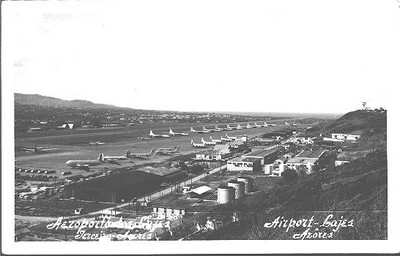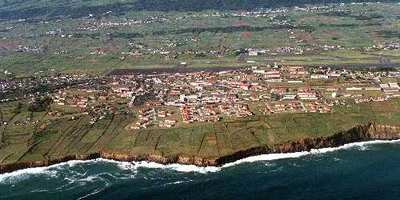Air Force Base In Azores Had The First TV Station In
Portugal
Fifty years ago, the tiny island of Terceira -- more
specifically Lajes Field -- made television history. It was an
event that brought the people of Portugal and the United States
closer, helped define an Air Force specialty and would become one
of the first quality-of-life necessities for Airmen deployed
worldwide.

It was television, and Lajes was the first to broadcast what is
now called American Forces Network-TV to a military audience.
Before 1954, military broadcasting consisted of only radio.
Armed Forces Radio Service provided "a little touch of home" by
recording disc jockey programs and shipping them to broadcast
affiliates for local military radio airwaves. Television was not
even on the drawing board, but that soon changed.
A military-run TV station was first proposed to Gen. Curtis E.
LeMay as a way to boost morale at remote strategic air command
bases in the United States. Limestone Air Force Base (ME) was far
from the nearest commercial TV station. With 15,000 service members
and their families assigned, the base faced a high rate of absences
without leave and divorce.
Two years after Limestone, later named Loring AFB, began
broadcasting its television signal, the AWOL rate dropped from 20
per 1,000 men to 2.5 per 1,000. Re-enlistments increased from zero
in early 1954 to 18 per month by March 1955. The value of military
broadcasting had proven itself, and the military air transport
service installed TV stations at all isolated bases under its
control.
 According to the book, "History of
AFRTS, the First 50 Years," transport service officials negotiated
with the Portuguese government to open a station here, and Air
Force News Agency’s Detachment 6, as it is called now,
broadcast the first overseas television signal Oct. 17, 1954.
According to the book, "History of
AFRTS, the First 50 Years," transport service officials negotiated
with the Portuguese government to open a station here, and Air
Force News Agency’s Detachment 6, as it is called now,
broadcast the first overseas television signal Oct. 17, 1954.
"From that first television signal 50 years ago to the 10 AFN
channels now enjoyed by our military servicemembers around the
world, Lajes has a proud history of providing the highest quality
information and entertainment to those proudly serving in uniform,
their families and civilian employees," said Mel Russell, American
Forces Radio and Television Service director. "Lajes has the
distinct honor of putting the ‘T’ in AFRTS."
AFN-Lajes was also the first television station in Portugal,
providing the local people their first taste of American
entertainment.
"The Portuguese had never seen television before AFN," said Jose
Mendes, an employee of AFN-Lajes for 40 years. "The response was
amazing. I lived on the west end of Terceira, and people actually
wanted to move east, closer to the base, just to receive the
signal."
When Mr. Mendes first began working at the detachment, the TV
broadcast day began at 6 p.m., and sign-off was at midnight.
"Radio was the primary source of information; television was for
entertainment," he said. "But soon, we began producing a live
evening newscast and even used magazine and newspaper pictures
instead of film. We’ve come a long way since that time, and
I’ve enjoyed watching and being a part of the progress."

Today, AFN offers its military customers multiple services.
"We take great pride in what we do every day," said Master Sgt.
John Tway, Det. 6 operations manager. "While we can’t air
everyone’s favorite program or sports team, we strive for
perfection and customer service in everything we do. No stateside
network offers the mix of programming that we do … and we
did it first. That’s something the entire base can be proud
of."
(ANN salutes Master Sgt. Chris Beckwith, Air Force News
Agency Detachment 6)
FMI: www.lajes.af.mil
 ANN's Daily Aero-Linx (05.06.25)
ANN's Daily Aero-Linx (05.06.25) ANN's Daily Aero-Term (05.06.25): Ultrahigh Frequency (UHF)
ANN's Daily Aero-Term (05.06.25): Ultrahigh Frequency (UHF) ANN FAQ: Q&A 101
ANN FAQ: Q&A 101 Classic Aero-TV: Virtual Reality Painting--PPG Leverages Technology for Training
Classic Aero-TV: Virtual Reality Painting--PPG Leverages Technology for Training Airborne 05.02.25: Joby Crewed Milestone, Diamond Club, Canadian Pilot Insurance
Airborne 05.02.25: Joby Crewed Milestone, Diamond Club, Canadian Pilot Insurance





